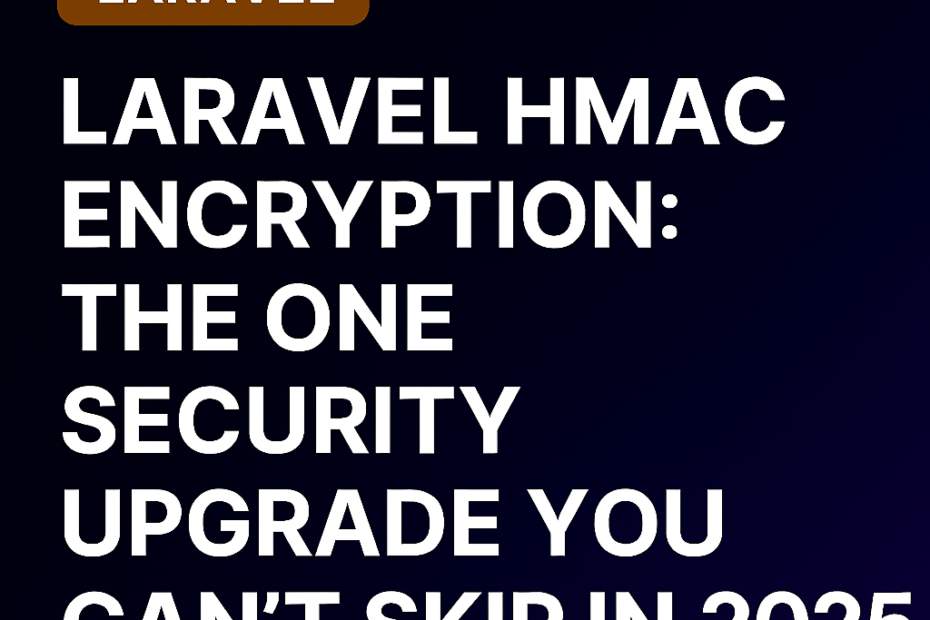In 2025, data integrity isn’t optional — it’s foundational. Whether you’re building a SaaS product, handling sensitive user data, or securing webhook endpoints, HMAC encryption offers a powerful layer of protection. And thanks to the open-source package laravel-hmac-encryption by Ghalibilal, implementing it in Laravel is refreshingly simple.
Let’s break down what HMAC is, why it matters, and how to use this package to secure your Laravel app.
🧠 What Is HMAC Encryption?
HMAC (Hash-based Message Authentication Code) combines a cryptographic hash function (like SHA-256) with a secret key to verify both the integrity and authenticity of data. Unlike basic hashing, HMAC ensures that the message hasn’t been tampered with — and that it came from a trusted source.
Use cases include:
- ✅ Securing API requests
- ✅ Validating webhook payloads
- ✅ Encrypting sensitive model attributes
- ✅ Preventing data spoofing in distributed systems
📦 Introducing laravel-hmac-encryption
This package wraps AES-256-CBC encryption with HMAC verification, giving you:
- 🔐 Encryption + integrity check in one step
- 🧩 Model attribute encryption via traits
- ⚙️ Customizable keys and algorithms
- 🧪 Simple API for encrypt/decrypt operations
Installation is straightforward:
composer require ghalibilal/laravel-hmac-encryptionThen publish the config:
php artisan vendor:publish --tag=hmac-encryption-config🧬 Encrypting Model Attributes
Add the trait to your model:
use Ghalibilal\LaravelHmacEncryption\Traits\Encryptable;
class User extends Model
{
use Encryptable;
protected $encryptable = ['email', 'phone'];
}Now, whenever you save or retrieve these attributes, they’ll be transparently encrypted and verified.
🔁 Encrypting & Decrypting Manually
use Ghalibilal\LaravelHmacEncryption\Facades\HmacEncryptor;
$encrypted = HmacEncryptor::encrypt('Sensitive data');
$decrypted = HmacEncryptor::decrypt($encrypted);If the HMAC check fails (e.g., tampered data), decryption will throw an exception — keeping your app safe.
🛡️ Securing Webhooks & APIs
You can use HMAC to validate incoming requests:
$signature = hash_hmac('sha256', $payload, $sharedSecret);
if (!hash_equals($signature, $request->header('X-Signature'))) {
abort(403, 'Invalid signature');
}This pattern is ideal for webhook verification, especially when integrating with third-party services.
🧠 Final Thoughts
If you’re building anything that handles sensitive data or communicates across systems, HMAC encryption is a must-have. The laravel-hmac-encryption package makes it easy to implement without sacrificing developer experience.
